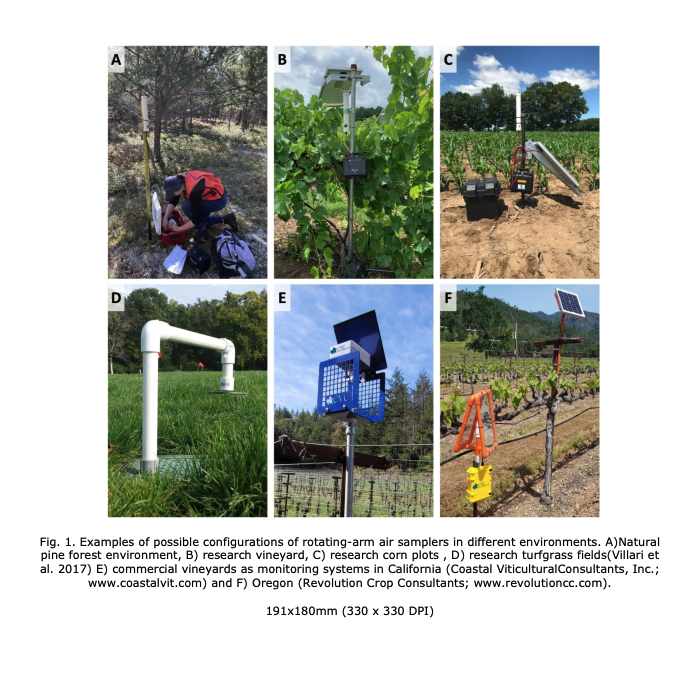A team of PSM graduate students learns more than science in publishing new paper
In a new pair of papers, PSM graduate students Becky Harkness, Jill Check and Lexi Heger show how choices made during design and implementation of samplers can influence the results-- and how recognizing this influence is crucial for researchers.

In It’s a trap! Exploring the application of rotating-arm impaction samplers in plant pathology PSM graduate students Becky Harkness, Jill Check and Lexi Heger describe how to design a project, plan the experiment, and process samples, and offer a thorough discussion of the factors influencing pathogen dispersal and how placement of the rotating-arm air samplers alters propagule capture, across many field systems and for any user type.

“The air samplers discussed in our review paper, as well as its companion article ("It’s a trap! Part II: An approachable guide to constructing and using rotating-arm air samplers for plant pathologists" Plant Disease) can be used to investigate pathogen dispersal and movement in any ecosystem: Lexi deployed her air samplers in vineyards, Jill used hers in corn fields, and I used mine in the forest,” Becky says.
As well as the science, the team learned that these projects require years of working together. “We put a lot of time into creating something we felt would be useful to many researchers,” Becky says “yet everyone was helpful and remained friendly throughout the process.”
Like agriculture, graduate school requires a lot of resilience says Becky. “A huge part of investigating things no one has studied before is failure.” Something maybe they did not know would be part of the process. “Part of graduate school is learning how to bounce back from failed experiments and rejected papers and not letting those experiences slow you down,” Jill adds.

While the review process was difficult, they had each other to commiserate with.” We went through many highs and lows with this manuscript and I think we are grateful we can just have fun when we get together now, rather than writing this!” Lexi says.
With this paper now behind them, these students look toward to the final months of their graduate school experience: Becky is closing in on a 2025 graduation, focusing on phylogenetic and epidemiological investigations of Caliciopsis canker disease in North America, while daydreaming about postdoctoral positions in forest health or mycology. Jill: also Spring 2025, and starting a 6-month internship with Corteva in April. Jill is working on tar spot of corn and white mold of soybeans, dry beans and potatoes and aiming toward a dissertation “The epidemiology and management of field crop diseases of Michigan.” Lexi: hopefully will be with us at least through 2025 as she pursues “Another day, another spore to trap: detection and management of Michigan’s destructive vineyard pathogens.”
“I have learned so much from the many diverse researchers we have in our department and made friends from all over the world,” Becky says.
Jill: The best part of graduate school is being surrounded by other students who are equally excited about science!
Lexi: I think the best part of graduate school is being surrounded by people who are as “nerdy” as me and enjoy just being surrounded by knowledge/learning. Everyone here enjoys science and having conversations about that cool plant they bought or the newest sourdough recipe they learned. The people make the tough times better.



 Print
Print Email
Email



